
Roots
The coil and curl, the twist and wave of textured hair, hold within them stories as ancient as the soil from which our ancestors rose. To trace the influence of ancient African cleansing heritage on modern hair practices means embarking on a journey back to the very source, to a time when hair was not merely an aesthetic choice, but a spiritual conduit, a social signifier, a living testament to identity and community. It calls us to look beyond the superficial, to understand the deep, resonant frequencies of tradition that still echo in our daily acts of care. Every gentle finger detangle, every scalp massage, every application of natural oils carries within it the whispers of generations past.
Consider for a moment the profound connection between the head and the divine in many African cultures. In pre-colonial Africa, hair was revered as the most elevated part of the body, a sacred portal for spiritual interaction and a visual language communicating status, age, religion, wealth, and tribal identity. This reverence meant hair care rituals were far from mundane; they were acts of profound cultural and spiritual significance. The techniques and ingredients employed were not arbitrary; they were born from an intimate understanding of the natural world and the unique needs of textured hair in diverse climates.

What Does Hair Anatomy Tell Us About Ancestral Care?
The inherent structure of textured hair, with its characteristic coils and bends, naturally lends itself to dryness due to the difficulty of natural oils (sebum) traveling down the hair shaft. This physiological reality meant that ancient African communities developed cleansing practices that prioritized moisture retention and scalp health, recognizing that a thriving strand begins at the root. Their understanding, while perhaps not couched in modern scientific terms, intuitively aligned with principles we now validate through microscopy and biochemical analysis.
Hair, at its cellular core, is composed of keratin, a protein. Yet, the specific helix of textured hair demands a specialized approach. Ancestral knowledge recognized this, focusing on ingredients that cleansed without stripping. For instance, the traditional use of certain clays, such as Rhassoul Clay from North Africa (from the Arabic word ‘ghassala,’ meaning ‘to wash’), served to purify without harshness.
This clay, rich in minerals like magnesium, absorbs impurities and toxins from the hair and scalp while leaving natural oils intact, promoting moisture and softness. This deeply rooted practice of utilizing natural, non-stripping cleansers forms a direct lineage to today’s co-washing methods and sulfate-free shampoos, which aim to preserve the hair’s natural moisture balance.

How Have Ancestral Classifications Shaped Our Understanding of Hair?
While modern systems classify textured hair into numerical and alphabetical types (3A to 4C), ancient African societies had their own intricate systems of classification, often tied to social roles, rites of passage, and tribal affiliations. These were not mere categorizations of curl pattern, but rather dynamic expressions of identity. Hairstyles themselves could signify marital status, age, religion, and rank. The practices of cleansing and preparing hair for these styles were integral to the social fabric.
For example, among the Himba tribe of Namibia, women traditionally cover their hair with Otjize, a mixture of butterfat and red ochre. This mixture serves as both a cleanser and a protective barrier against the sun, providing natural UV protection. This historical example underscores a fundamental difference from Western cleansing ideals; for many African traditions, cleansing was intertwined with conditioning and protection, a holistic approach that resonates deeply with contemporary textured hair care.
Ancient African hair cleansing was not a mere act of hygiene; it was a profound cultural and spiritual ritual, intrinsically linked to identity, community, and the sacredness of the physical form.
The language of textured hair, too, finds its echoes in ancestral lexicons. Words like “coils,” “locs,” and “braids” are more than descriptive terms; they carry the weight of generations who molded, adorned, and revered these structures. The care of these forms, including their cleansing, was a communal activity, strengthening familial bonds. This communal grooming, often involving hours of intricate work, meant that cleansing agents needed to be gentle and compatible with long periods of manipulation and styling.
The transition from pre-colonial practices to the challenges introduced by the transatlantic slave trade profoundly disrupted these ancestral methods. Enslaved Africans were forcibly removed from their lands and traditional ingredients, often compelled to use harsh, damaging substances like cooking oil or animal fats for hair care. This painful severing from traditional ways underscores the resilience inherent in the continued use and rediscovery of these heritage ingredients and methods today.
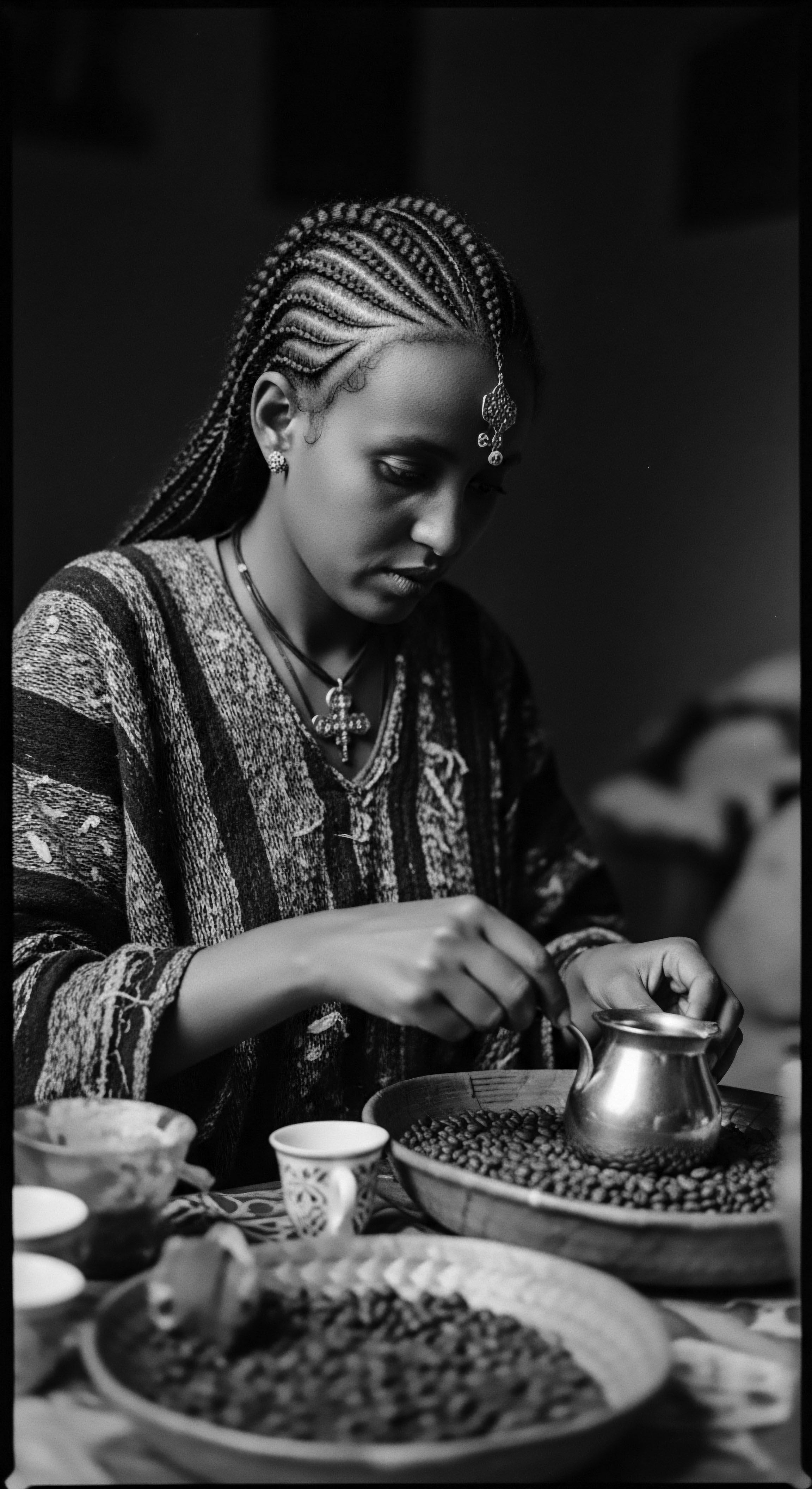
Ritual
The act of cleansing textured hair today, whether it is a co-wash, a deep conditioner, or a carefully diluted shampoo, carries within it the spectral memory of ancient African rituals. It is a dialogue across time, where the intent to purify and prepare for wellness and beauty remains a constant, even as the tools and exact formulations evolve. These rituals, once the cornerstone of individual and communal identity, speak to a holistic approach to hair care that extends far beyond simple hygiene.

How Has Cleansing Influenced Traditional and Modern Styling Heritage?
Cleansing has always been an integral prelude to styling. In ancient African societies, elaborate hairstyles were not only indicators of social standing but also required specific preparations. The cleansing agents used were often concocted from locally sourced botanicals and minerals, chosen for their mildness and ability to prepare the hair for intricate braiding, twisting, and adornment. This foundational step was never about stripping the hair; rather, it was about creating a supple, well-nourished canvas.
Modern protective styling, a cornerstone of textured hair care, echoes this ancestral wisdom. Styles like braids, twists, and locs, which were used historically for identity and protection, require clean, well-conditioned hair to minimize breakage and retain length. The deep conditioning and scalp treatments that accompany modern wash days for textured hair are direct descendants of these older practices, ensuring the hair is resilient enough for sustained styles.

Traditional Cleansing Agents and Their Modern Counterparts
The repertoire of ancient African cleansing ingredients was vast and varied, reflecting the diverse flora and geological resources of the continent. Many of these ingredients provided gentle, conditioning cleanses, often leaving the hair soft and manageable.
- African Black Soap ❉ Originating from West Africa, particularly Ghana and Nigeria, this traditional soap made from plantain skins, cocoa pods, and palm oil ash, combined with various oils like shea butter and coconut oil, has been a central cleansing agent for centuries. It is known for its ability to cleanse deeply without stripping natural oils, leaving hair feeling soft. Its modern popularity for hair care highlights a direct continuation of ancestral practices, providing a natural, gentle cleansing alternative to conventional shampoos.
- Clays and Earths ❉ Beyond Rhassoul, various clays were used for cleansing and purifying. These mineral-rich earths pulled impurities from the scalp and hair, leaving it refreshed. Today, bentonite clay masks are widely used in textured hair care for their detoxifying and conditioning properties. The practice of applying a clay “pre-poo” or cleansing mask before shampooing directly mirrors the historical use of such natural elements to prepare and purify the hair.
- Herbal Infusions and Plant Extracts ❉ Across Africa, diverse plants were used for hair and skin health. For example, in Ethiopia, the leaves of Ziziphus Spina-Christi and Sesamum Orientale were traditionally utilized for hair cleansing and conditioning. Similar practices involved using other plant extracts and herbal concoctions that provided mild cleansing alongside beneficial nutrients. Modern natural hair products often feature botanical extracts, acknowledging the efficacy of these ancestral ingredients.
These methods of cleansing allowed for a greater frequency of cleansing without compromising the integrity of textured hair, which is prone to dryness. This stands in contrast to the misconception that Black hair is inherently “dirty” or needs less washing, a narrative that emerged during periods of dehumanization.
The enduring legacy of African cleansing heritage in modern textured hair care rests upon a foundation of gentle yet thorough purification, preparing the hair for protective styles and fostering its intrinsic health.
| Traditional African Cleansing Agent African Black Soap (Ose Dudu) |
| Primary Cleansing Mechanism & Heritage Link Saponins from plant ashes gently lift dirt without harsh stripping; maintains natural pH. |
| Modern Hair Practice Echo Low-lather, sulfate-free shampoos; cleansing conditioners (co-washes) preserving moisture. |
| Traditional African Cleansing Agent Rhassoul Clay / Bentonite Clay |
| Primary Cleansing Mechanism & Heritage Link Negative charge attracts positively charged impurities; mineral-rich and conditioning. |
| Modern Hair Practice Echo Detoxifying clay masks; pre-poo treatments for deep cleansing and softening. |
| Traditional African Cleansing Agent Herbal Infusions (e.g. Ziziphus spina-christi) |
| Primary Cleansing Mechanism & Heritage Link Natural saponins and beneficial plant compounds provide mild cleansing and conditioning. |
| Modern Hair Practice Echo Botanical shampoos; herbal rinses; leave-in conditioners with plant extracts. |
| Traditional African Cleansing Agent This table illustrates the direct correlation between time-honored African cleansing methods and their contemporary adaptations, highlighting a continuous thread of heritage in hair care. |
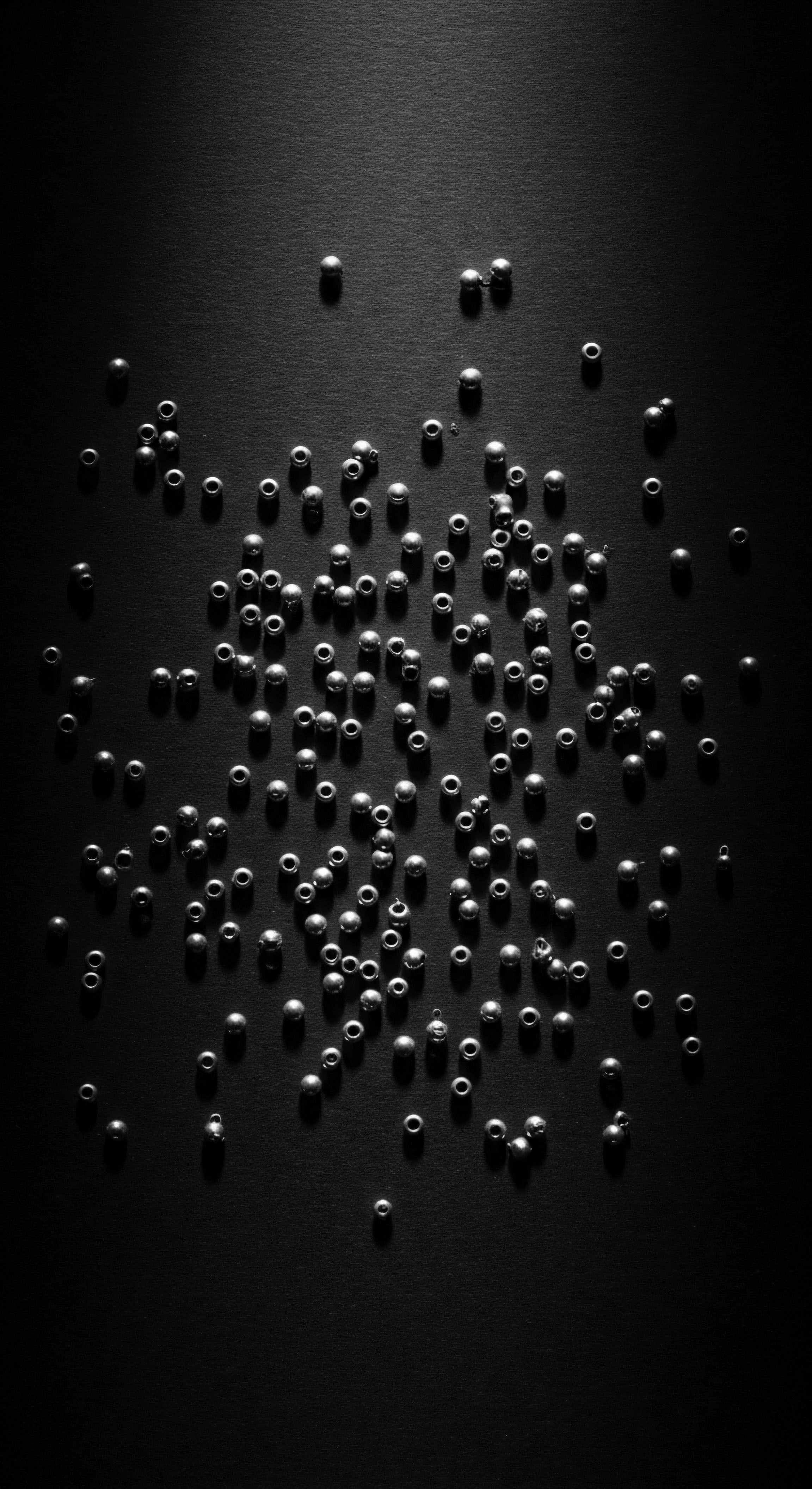
Could Ancient Cleansing Methods Offer Solutions for Today’s Hair Challenges?
The deep understanding of textured hair’s needs, inherent in ancient cleansing heritage, offers valuable insights for common modern hair challenges. For example, the focus on ingredients that cleanse without stripping is particularly relevant for addressing dryness, a common concern for many with textured hair. African black soap, with its ability to remove buildup while leaving hair soft and nourished, provides a powerful historical answer to issues of moisture retention.
Similarly, the use of various oils and butters for pre-cleansing or as part of the wash day ritual, a practice common in West African traditions, mirrors today’s popular oil treatments for moisture and scalp health. The intentionality behind these ancient practices, often performed with care and communal engagement, also serves as a poignant reminder of the importance of slowing down and treating hair care as a ritual of self-care.
The communal aspect of ancient hair care, where cleansing and styling were often shared activities, also presents a model for contemporary spaces. Hair salons and natural hair meet-ups today echo these historical gatherings, providing spaces for shared knowledge, mutual care, and the celebration of textured hair. This social dimension of cleansing, far from a solitary chore, speaks to a heritage where hair care was a collective act of affirmation and continuity.
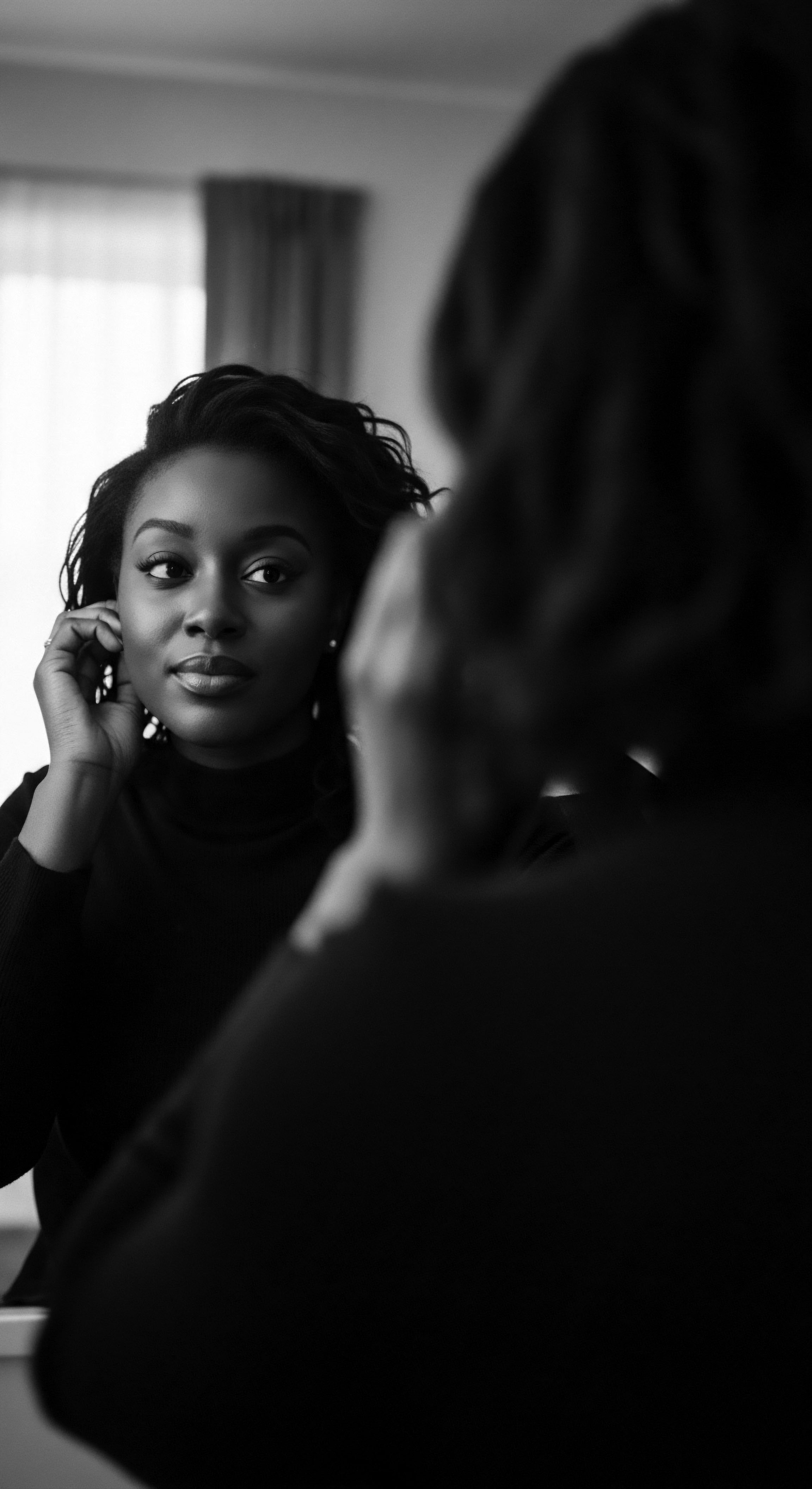
Relay
The enduring wisdom of ancient African cleansing heritage has not simply survived; it has journeyed across continents and generations, evolving and adapting, yet retaining its fundamental spirit. This is the relay, the passing of deeply held knowledge from antiquity to the bustling present, an ongoing conversation between ancestral ingenuity and modern scientific understanding. For textured hair, this connection is particularly palpable, reflecting a resilience woven into the very strands.
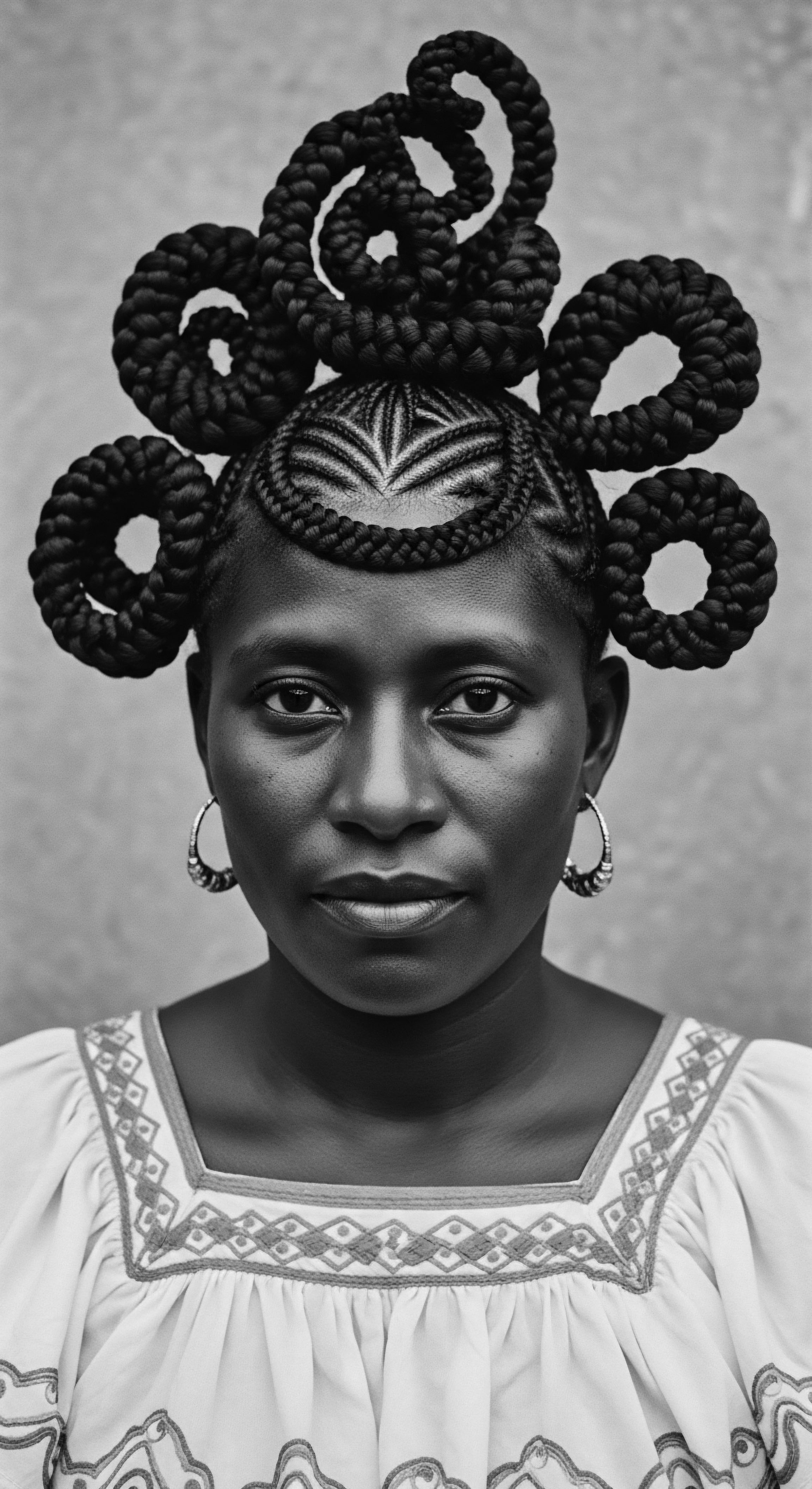
How Do Modern Hair Practices Validate Ancestral Cleansing Science?
Contemporary hair science, with its sophisticated analytical tools, increasingly validates the efficacy of traditional African cleansing practices. Consider the widespread use of African Black Soap. Beyond its cultural importance as a symbol of empowerment, scientific analysis confirms its beneficial composition. Made from locally harvested plant ashes (like cocoa pods, plantain peels) and various oils, this soap contains natural saponins that create a gentle lather, effectively lifting dirt and excess oil without stripping the hair’s natural moisture barrier.
This aligns with the modern understanding of maintaining the scalp’s microbiome and hair’s lipid layer, critical for preventing dryness and breakage in textured hair. The traditional method of its creation, often a communal enterprise using readily available natural resources, also aligns with contemporary calls for sustainable and eco-conscious beauty practices.
Another compelling example rests with various clays, particularly bentonite, which has been used for cleansing hair for millennia in various cultures, including parts of Africa. Modern research reveals that bentonite clay’s negative charge attracts positively charged toxins, product buildup, and heavy metals from the hair and scalp. This magnetic action allows for deep purification without the harshness of sulfates, which can be detrimental to the delicate structure of textured coils. This scientific explanation for its cleansing action reaffirms what ancestral practitioners understood intuitively ❉ certain natural elements possess properties that address the unique needs of textured hair.
| Heritage Ingredient Shea Butter (Vitellaria paradoxa) |
| Ancestral Context & Application Used across West Africa for moisturizing skin and hair, offering UV protection, and as a base for hair treatments. |
| Modern Scientific Validation & Current Use Rich in fatty acids and vitamins A, E, F; known for emollient and anti-inflammatory properties, promoting moisture retention and skin barrier function. Found in countless conditioners and moisturizers. |
| Heritage Ingredient Karkar Oil |
| Ancestral Context & Application Traditional Sudanese blend of sesame oil, animal fat (cow/ostrich), and honey wax for hair growth, dandruff, and scalp health. |
| Modern Scientific Validation & Current Use Sesame oil provides nourishing lipids; honey wax offers humectant properties. Recognized for scalp treatment, anti-fungal, and anti-bacterial effects, supporting healthy hair growth and moisture retention. |
| Heritage Ingredient Chebe Powder |
| Ancestral Context & Application Used by Basara Arab women of Chad to coat hair, reducing breakage and retaining length; mixture of herbs and seeds. |
| Modern Scientific Validation & Current Use Protects hair shaft from mechanical damage, locks in moisture, and reduces split ends, contributing to length retention. Applied as a paste or leave-in treatment. |
| Heritage Ingredient The continued presence of these ingredients in contemporary products underscores a profound respect for ancestral knowledge and its proven benefits for textured hair. |
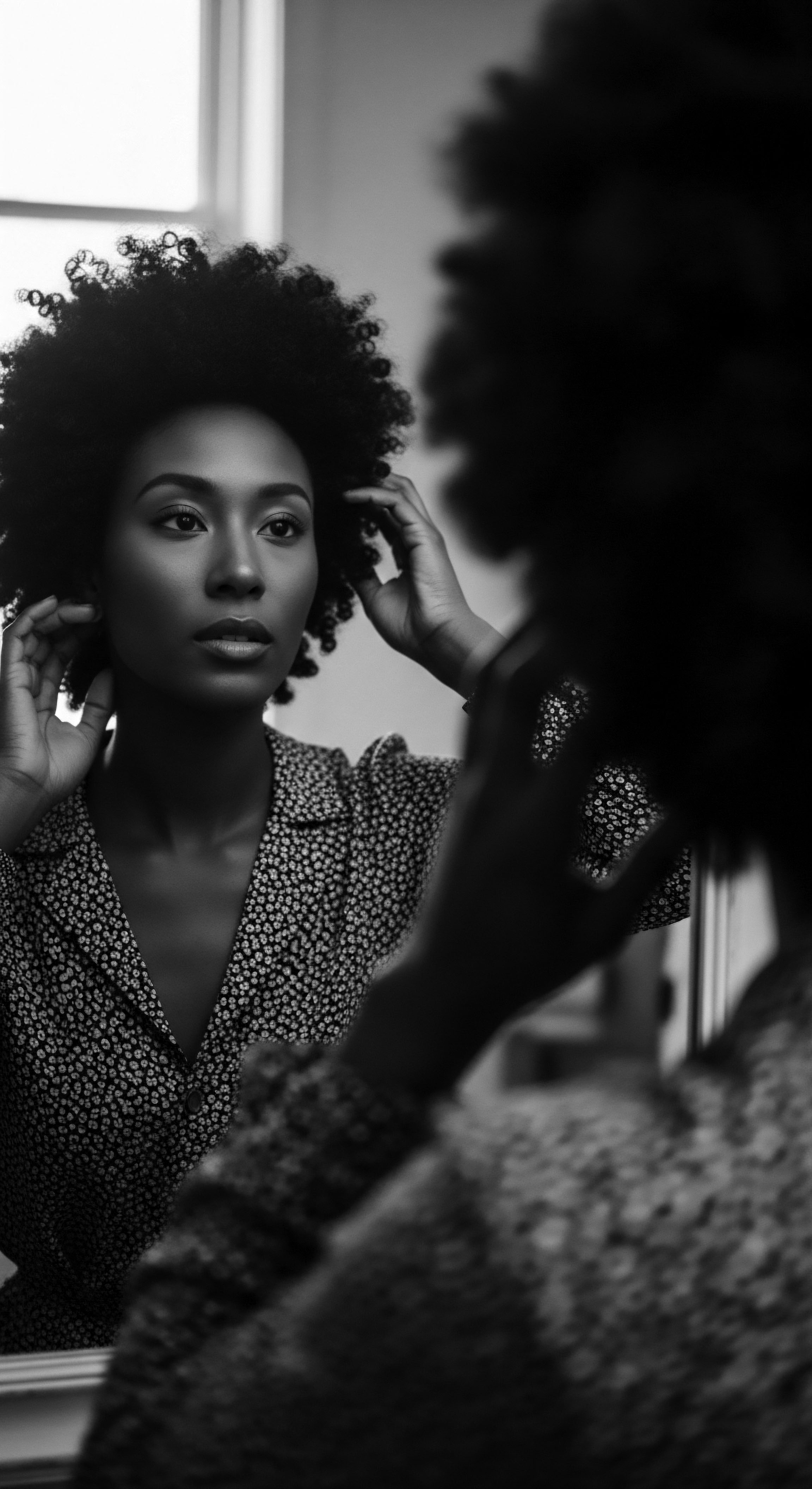
What Societal Transformations Have Shaped Hair Cleansing Practices?
The journey of African hair care, including cleansing practices, is inextricably bound to broader societal transformations. The transatlantic slave trade, a brutal historical rupture, imposed not only physical bondage but also a systematic erasure of cultural identity, including hair practices. Enslaved Africans were often forced to shave their heads, severing a profound spiritual and social connection. Deprived of traditional ingredients and tools, they adapted, using what was available, even harsh substances, to care for their hair.
This period laid the groundwork for a deeply complex relationship with textured hair in the diaspora, often marked by pressures to conform to Eurocentric beauty standards. The ritual of visiting hair salons for chemical straightening, prevalent well into the 2000s, speaks to this historical legacy.
Modern scientific inquiry into the natural properties of traditional African cleansing ingredients, such as African black soap and various clays, consistently validates the deep, intuitive understanding of hair health held by ancestral practitioners.
Yet, resilience persisted. The reclamation of natural hair, particularly prominent since the latter half of the 20th century, stands as a powerful act of cultural resurgence and self-affirmation. This movement consciously seeks to reconnect with ancestral practices, re-centering textured hair and its inherent beauty. The ‘wash day’ routine for many Black women today, far from a chore, holds echoes of ancient communal grooming rituals.
It is a personal and often private act of preserving one’s crown, involving careful product selection and application techniques. This deliberate return to and adaptation of practices that nourish and protect textured hair represents a profound historical continuity.

How Do Holistic Wellness Philosophies Connect to Ancestral Cleansing?
The ancient African approach to cleansing was rarely isolated to just the hair; it was part of a larger holistic wellness philosophy. In Sudan, traditional beautification rituals included smoke baths (al-dukkhan) and scrubs (al-dilka), practices deeply associated with cleanliness and purification. These comprehensive rituals suggest a belief that physical purity and aesthetic care contributed to overall spiritual and bodily health.
This integrated perspective, where external care reflects internal well-being, is powerfully echoed in modern holistic hair care. Contemporary proponents advocate for nourishing the body from within through diet and mindful practices, understanding that hair health is a reflection of systemic wellness.
The use of ingredients like Moringa Oil, Baobab Oil, and Marula Oil in ancient rituals, now popular in global beauty, further illustrates this integrated approach. These ingredients, with their rich nutrient profiles, were applied topically but were understood to contribute to overall vitality. The modern embrace of plant-based cosmetopoeia, recognizing the topical nutritional benefits of African botanicals, demonstrates a continuity of this wisdom.
This connection transcends mere product application; it embodies a reverence for the body and its connection to the natural world, a foundational tenet of ancestral care. The practice of hair wrapping, too, has evolved from symbolizing tribal identity and social status to a modern method of maintaining healthy hair overnight or as a quick, protective style, demonstrating the adaptive spirit of these heritage practices.
- Ethnobotanical Knowledge ❉ The transmission of plant-based remedies and practices for hair and skin care through generations, deeply rooted in local communities’ interactions with their environment.
- Ritualistic Application ❉ The intentionality and ceremonial aspect of hair cleansing and grooming, signifying spiritual purity, transitions, or social status.
- Communal Care ❉ The historical practice of hair grooming as a shared activity, strengthening familial and social bonds, which resonates with contemporary hair care communities.

Reflection
The story of textured hair, particularly its cleansing heritage from ancient Africa, is a profound living archive, a narrative that continues to unfold with each intentional act of care. From the deep spiritual significance embedded in every coil to the scientific validation of age-old remedies, the echoes of ancestral wisdom resonate through our contemporary practices. We witness not a mere imitation of the past, but a dynamic, resilient continuity, a testament to the enduring human desire for connection, identity, and holistic well-being.
Roothea’s ‘Soul of a Strand’ ethos finds its very breath in this continuum. It understands that cleansing a strand of textured hair is never just about hygiene; it is an act of honoring lineage, of reaffirming a cultural legacy that survived immense adversity. The deep knowledge of botanicals, clays, and oils, passed down through generations, underscores a timeless truth ❉ nature holds profound solutions for our care.
As we choose gentle cleansers, protective styles, and nourishing routines, we are not simply tending to our hair; we are engaging in a sacred dialogue with those who came before us, preserving their ingenuity and celebrating the luminous resilience of our shared heritage. This ongoing conversation between past and present ensures that the profound journey of textured hair remains ever-present, a source of strength, beauty, and unwavering pride.
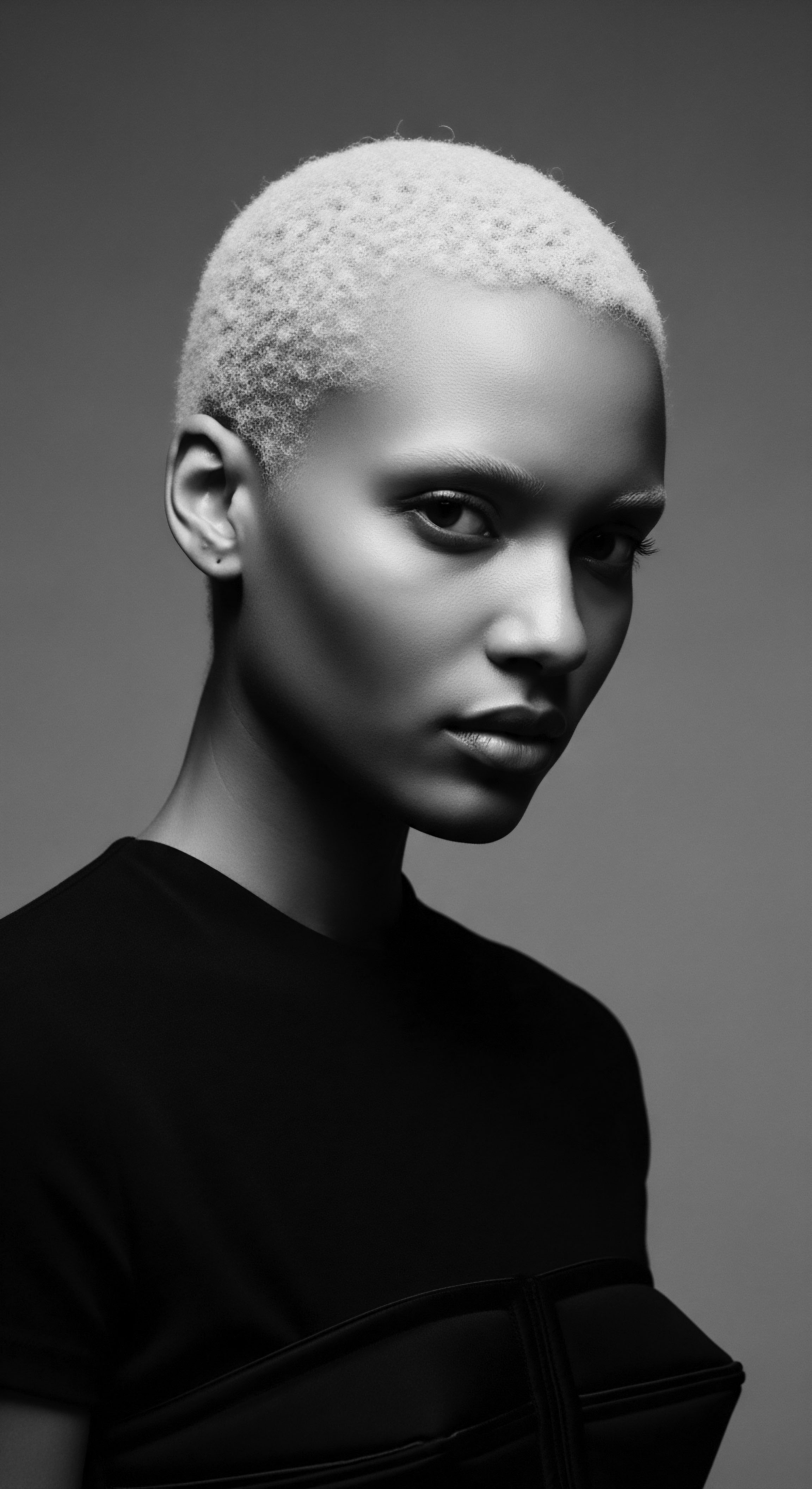
References
- Byrd, Ayana, and Lori L. Tharps. Hair Story ❉ Untangling the Roots of Black Hair in America. St. Martin’s Press, 2001.
- Diala, Isidore. “Women in Beauty Cultures and Aesthetic Rituals in Africa.” Oxford Research Encyclopedia of African History, 2023.
- Omotos, Adetutu. “The ‘Dreaded’ Colonial Legacy ❉ African Hairstyles.” Journal of Pan African Studies, vol. 11, no. 7, 2018.
- Sharaibi, O. J. et al. “Cosmetic Ethnobotany Used by Tribal Women in Epe Communities of Lagos State, Nigeria.” Journal of Complementary Medicine & Alternative Healthcare, vol. 12, no. 4, 2024.
- Singh, Neha. “Bentonite Clay as a Natural Remedy ❉ A Brief Review.” Journal of Analytical Science and Technology, vol. 12, no. 1, 2021.
- Suleiman, Yasir A. “Plants used for hair and skin health care by local communities of Afar, Northeastern Ethiopia.” Ethnobotany Research and Applications, vol. 28, 2025.
- Udoh, Idongesit, and John M. Owojori. “African Black Soap ❉ Physicochemical, Phytochemical Properties and Uses.” Journal of Cosmetics, Dermatological Sciences and Applications, vol. 11, no. 3, 2021.
- Vickers, Ashley. “Cosmetopoeia of African Plants in Hair Treatment and Care ❉ Topical Nutrition and the Antidiabetic Connection?” MDPI, vol. 13, no. 4, 2024.
- Williams, Carla. “What Every Dermatologist Must Know About the History of Black Hair.” Journal of Drugs in Dermatology, vol. 22, no. 11, 2023.
